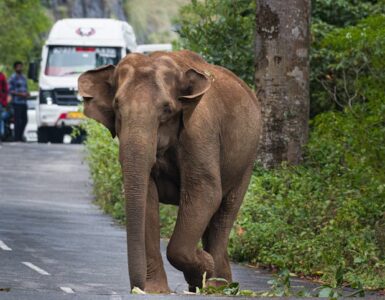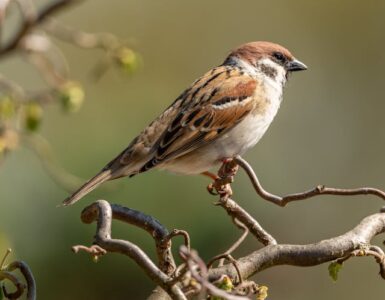If there is one animal species, apart from dogs and cats, that we are all familiar with is rodents, of which rats and squirrels are the most popular. The former are mostly found unwantedly loitering in our house to steal food or hide in some corner and later are mostly leaping around trees in a garden or a public park.
While rats and squirrels are more widely seen, Rodents are a diverse group of mammals. They belong to the order Rodentia, which includes over 2,000 species.
Rodent species vary significantly in size, diet, and behavior.
They are characterized by a single pair of continuously growing incisors in both the upper and lower jaws, which they effectively use to feed on seeds, fruits, and plants; however, some species may have more varied diets that include insects or small animals.
Their adaptability has allowed them to thrive in diverse ecosystems around the world.
Different Rodent Family
Though rodents are so widely spread, we know little about them.
Let us go through different types of rodents categorized by their families:
Muridae
This family of rodents includes house mice, rats, gerbils, zokors, and hamsters. The Muridae family is the largest, containing more than 1200 of all rodent species within 18 subfamilies.
House mice and rats are small, typically gray or light brown, and have large ears. They can be found in almost every terrestrial habitat, including urban environments like basements, underground sewer lines, and crawlspaces.
The easy availability of food allows them to reproduce quickly, leading to rapid infestations, and are known to cause damage by gnawing on wires and insulation.
Do you know the formation of one Indian state was partly due to rats? Find out this interesting story. Read here

Sciuridae
Comprises squirrels, flying squirrels, chipmunks, marmots, and prairie dogs. This rodent family is known for their bushy tails and strong hind limbs.
The most common are tree squirrels recognizable by their agile movements and for climbing up and down on a tree and its branches.
Squirrels have an important ecological role as nature gardeners. They have a habit of picking seeds and burying them for future use. They bury the seeds throughout the environment and often forget the location, thereby helping in tree plantation and reforestation.
Flying squirrels are another interesting rodent that can glide between trees. They don’t have wings to fly like birds or bats, but they have a furred skin membrane that stretches from wrist to ankle, which helps them glide from one tree to another.
Caviidae (Cavies)
This rodent family includes guinea pigs and capybaras, found mostly in forests and savannas in South America. These rodents are generally larger and have a more robust body structure.
Capybaras, mostly found in South America are the world’s largest rodents. They are semiaquatic mammals that can grow up to 4 feet and typically weigh 40 to 70 kg.
Interestingly, Guinea pigs are neither native to Guinea nor related to pigs, they are rodents from the Andes region in South America. In the last few centuries, guinea pigs have become popular as household pets due to their docile and friendly nature.
Erethizontidae (New World Porcupines)
The Erethizontidae rodent family contains porcupines, known for their quills and spiny covering as a defense mechanism. They inhabit forests and wooded regions across North America and South America.
The needle-like quills are modified hairs made out of keratin, the same substance found in human hair and Rhino’s horn. These quills are typically docile until a porcupine feels threatened by a predator. When a predator attempts to attack a porcupine, it will raise its quills as a warning.
Though porcupines do not have the ability to shoot their quills like projectiles, if they get stuck to the predator, it can prove fatal if not removed.
Hystricidae (Old World Porcupines)
The Old World Porcupines rodent family is primarily found in Europe, Africa, and Asia.
Apart from their geographical differences, Old World Porcupines differ from New World Porcupines in characteristics, eating habits, and physical features.
Castoridae
Castoridae is a family of rodents that has Beavers who are notable for their dam-building abilities and semi-aquatic lifestyle.
Beavers are the second-largest living rodents and can weigh up to 50 kg. They are typically found in freshwater habitats, such as rivers, streams, lakes, and ponds. They have a unique behavior of chewing down trees and branches to make dam-like structures that restrict the water flow, which creates a wetland.
The work of beavers is considered important for the environment for multiple reasons.
Learn more about why Beavers are known as ecosystem engineers.
Cricetidae
Cricetidae is among the largest rodent family with over 600 species including voles, lemmings, and muskrats. Many members are adapted to various habitats from grasslands to wetlands. They are found throughout North America, South America, Europe, and most of Asia.
Dipodidae
The family Dipodidae includes the birch mice, jumping mice, and jerboas. Dipodidae are known for their long hind legs which allow them to jump effectively.
Jumping mice are well known for making jumps up to 10 feet in a single hop.
Chinchillidae
The rodent family Chinchillidae consists of the chinchillas and viscachas, inhabiting the Andes region of South America.
Chinchillas are known for their soft fur, which has been overexploited by humans for trade, making them critically endangered.
Importance of Rodents in the Ecosystem
This was a small sample of different types of rodents and their families. As mentioned there are more than 2000 species in their family, contributing to the environment and natural ecosystem in their own way.
While rodents like beavers and squirrels play an extremely important role in biodiversity, it does not mean other rodents are only for spreading disease or being a nuisance in the surroundings.
Let us look at the importance of rodents in the ecosystem:
Food Web
Rodents have a critical role in the food web, because of their abundance in the wildlife, they are a source of food for other animals. Many large animals, birds, and reptiles feed on rodents because of their availability in different terrains.
Even humans consume rats for their dietary needs. In many countries, people consume rat meat as a delicacy, in community rituals, and even as a source of protein and amino acids.
The rat meat is also being discussed as a “solution for alleviating the world’s hunger and malnutrition problems.”
Soil Fertility
Another important contribution of rodents in the ecosystem is their ability to improve soil fertility. Rats, mice, and other rodents often dig into the soil creating an extensive network of tunnels and burrows for their stay.
The constant turning and mixing of different layers of soil along with other litter and their dung, help in aerating the soil and improving its fertility.
Scientific Experiments
Rats are biologically similar to humans and are therefore subjected to test experimental drugs and treatments.
Many modern drugs and medicines used for treating humans were first tested on small rats and mice in big scientific laboratories.
Experimenting with a rat’s body is part of the biology lessons and curriculum in schools and medical colleges.
Waste Pickers
In urban environments, like cities, rats and mice often eat the food leftovers that are thrown into the surroundings, thereby cleaning the place.
Watch this video on the Change Started YouTube channel to know the significance of Rodents.
Have you seen Ratatouille, an animated comedy-drama film released in 2007? The movie also won the Academy Award for Best Animated Feature.
The movie portrays the story of a young rat’s unique partnership with a kitchen worker at a famous Paris restaurant. Though it was animated but movie brilliantly connects a human with a rodent.
In the Indian state of Rajasthan, there is a Hindu temple, renowned as the “Temple of Rats” due to the presence of hundreds of rodents known as kābā which are considered holy and treated with utmost care by devotees.
The presence of rats in a Temple is also endorsed as a symbol of environmental consciousness in Hindu values and ethos.
Wrapping Up
While human-rat collaboration is unlikely to form in normal life as for most humans the sight of rats is met with displeasure and disgust, especially in a kitchen.
However, even if we don’t form a partnership, it is important to recognize their contribution to the environment and appreciate their role in our lives.






Add comment